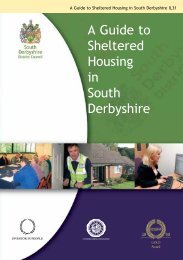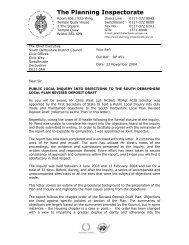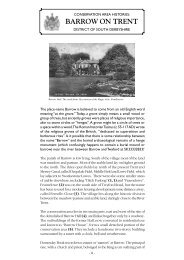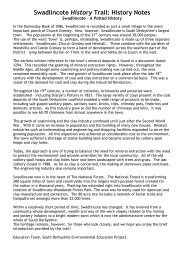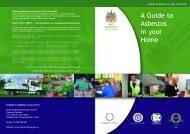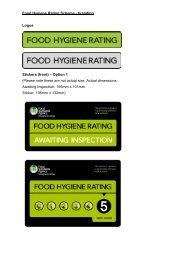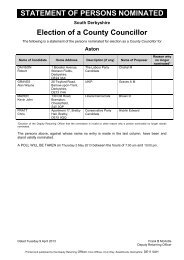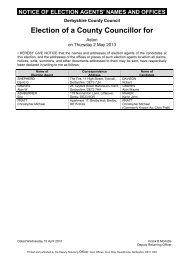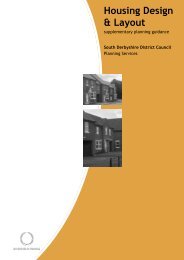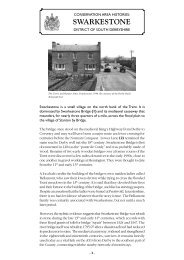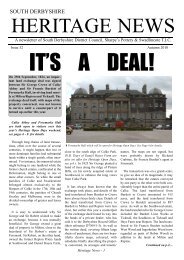Housing Strategy 2009-2014 - South Derbyshire District Council
Housing Strategy 2009-2014 - South Derbyshire District Council
Housing Strategy 2009-2014 - South Derbyshire District Council
You also want an ePaper? Increase the reach of your titles
YUMPU automatically turns print PDFs into web optimized ePapers that Google loves.
<strong>South</strong> <strong>Derbyshire</strong> <strong>District</strong> <strong>Council</strong> <strong>Housing</strong> <strong>Strategy</strong> <strong>2009</strong> – <strong>2014</strong><br />
medium term (3 – 5) year contracts to deliver a range of planned maintenance and<br />
improvement projects.<br />
8.1.4 The <strong>Council</strong> continues to improve the energy efficiency of the stock to tackle fuel<br />
poverty in the social sector. This includes reducing the number of homes heated<br />
by solid fuel and improving thermal efficiency. Since 1st April 2004 the <strong>Council</strong> has<br />
made incremental improvements to the energy efficiency of the stock from a SAP<br />
rating of 61 to 68 19 in April 2008.<br />
Key Issue: Completion of the stock options review.<br />
8.2 Register Social Landlords <strong>Housing</strong> Stock<br />
8.2.1 Registered Social Landlords (RSLs) manage some 586 (April 2008) properties for<br />
social rent. These are mainly located in and around the Swadlincote urban area. A<br />
high proportion of this stock has been built since the late 1980’s; hence overall the<br />
stock is in good condition meeting the decent homes standard.<br />
8.3 Private Sector Homes<br />
8.3.1 Approximately 83% of the district’s housing stock is owner-occupied with the<br />
remaining comprising of approximately 9.5% (586) social rented and 7.5% (2609)<br />
private rented. The district stock condition survey carried out in <strong>2009</strong> 20 finds: -<br />
• The proportion of long-term empty properties was estimated to be 1.5%<br />
(530 properties), on a par with the national average of 1.5%.<br />
• An estimated 12,100 dwellings in <strong>South</strong> <strong>Derbyshire</strong> (27.8% of the stock)<br />
are non-decent. These are most associated with low-rise purpose built flats<br />
and converted flats, the private rented sector and properties built pre-1919.<br />
• At present 7,100 (20.4%) of dwellings are estimated to have at least one<br />
Category 1 Hazard as defined by the <strong>Housing</strong> Health and Safety Rating<br />
System. The highest proportion was found in northeast of the district.<br />
• The average SAP rating for all dwellings is estimated to be 53, which is<br />
above the all England average of 49.<br />
• 27.8% of all dwellings in the district fail the Decent Homes Standard.<br />
8.3.2 The <strong>Council</strong> is committed to improving the standard of living for vulnerable people<br />
and disadvantaged groups. Meeting the decent homes standard makes a major<br />
contribution to wider objectives such as tackling fuel poverty. Up until the 1 April<br />
2008, the government target for achieving decency standards in the private<br />
19<br />
Figure is from the Government’s Business Plan Annual Monitoring return for April 2008.<br />
20<br />
CPC (<strong>2009</strong>) Private Sector <strong>Housing</strong> Condition Survey.<br />
28



